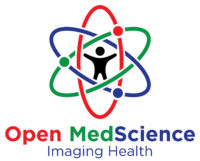Gallium-68 Gozetotide is a radiopharmaceutical agent used in Positron Emission Tomography (PET) imaging. PET is a non-invasive nuclear imaging technique that utilises radiotracers to create 3-D images of biological processes within the body. Ga-68 Gozetotide is a somatostatin receptor (SSTR) antagonist, which allows it to target and bind to SSTRs in various tumour types. This article provides an overview of the synthesis, properties, and applications of Gallium-68 Gozetotide in oncology.
Synthesis and Properties of Gallium-68 Gozetotide
Gallium-68 is a positron-emitting radioisotope with a half-life of 68 minutes. It is typically produced through a 68Ge/68Ga generator system, allowing radionuclide on-demand production. Gozetotide, a somatostatin analogue, is then radiolabelled with Ga-68 via a chelator, such as 1,4,7,10-tetraazacyclododecane-1,4,7,10-tetraacetic acid (DOTA). This results in the formation of Ga-68 Gozetotide.
Using Ga-68 as the radioisotope for PET imaging has several advantages, including its short half-life, which reduces radiation exposure to patients and staff, and its high positron yield, providing excellent image resolution.
Gallium-68 Gozetotide Injection: A Breakthrough in Prostate Cancer Diagnosis
Gallium-68 Gozetotide Injection represents a significant advancement in the diagnostic landscape of prostate cancer. This radioactive diagnostic agent is specifically indicated for positron emission tomography (PET) scanning of prostate-specific membrane antigen (PSMA) positive lesions. This innovative technique is particularly beneficial for men diagnosed with prostate cancer in two critical scenarios.
Firstly, it is employed for patients with suspected metastasis who are potential candidates for initial definitive therapy. In this context, Gallium-68 Gozetotide Injection plays a pivotal role in accurately staging the cancer. Identifying the extent and exact location of metastatic lesions enables clinicians to tailor treatment strategies effectively, ensuring a targeted and efficient approach to combating the disease.
Secondly, the injection is used in cases where there is a suspected recurrence of prostate cancer, evidenced by an elevated serum prostate-specific antigen (PSA) level. In such situations, conventional imaging methods may not be sensitive enough to detect small or early-stage metastases. Gallium Ga 68 Gozetotide Injection, through its high sensitivity for PSMA-positive lesions, provides a more accurate assessment of the cancer’s status, thereby facilitating timely and appropriate intervention.
In summary, Gallium-68 Gozetotide Injection is a cutting-edge tool in the diagnostic arsenal against prostate cancer. Its ability to precisely detect PSMA-positive lesions in suspected metastasis or recurrence cases is transforming the management and treatment outcomes for patients afflicted with this condition.
Advantages and Limitations of Gallium-68 Gozetotide
One of the main advantages of Ga-68 Gozetotide is its high target-to-background ratio, which results in improved lesion detection compared to other radiopharmaceuticals. Additionally, the short half-life of Ga-68 reduces the radiation burden on patients and enables rapid scanning times.
However, there are some limitations to the use of Ga-68 Gozetotide. As with any radiopharmaceutical, there is a risk of allergic reactions or adverse events related to the radiotracer. Furthermore, the production of Ga-68 requires specialised equipment and trained staff, which may limit its availability in some medical centres.
Conclusion
Gallium-68 Gozetotide has shown promise as a radiopharmaceutical agent for PET imaging in oncology, particularly for detecting and staging neuroendocrine tumours. Its high affinity for somatostatin receptors and excellent imaging properties make it a valuable tool in diagnosing and managing these malignancies. However, further research is needed to explore its full potential in the field of oncology and to expand its applications in other cancer types.
Disclaimer:
The information provided in this article is intended for educational and informational purposes only. Gallium-68 Gozetotide is a radiopharmaceutical agent used under specific clinical conditions and should only be administered by qualified healthcare professionals in appropriately equipped medical facilities. This article does not constitute medical advice, diagnosis, or treatment recommendations. Patients should consult their physician or a qualified medical specialist for personalised medical guidance. The content summarises currently available research and clinical use but may not reflect the most recent developments or regulatory approvals. Neither the authors nor the publisher assume any liability for the accuracy, completeness, or use of the information contained herein.
